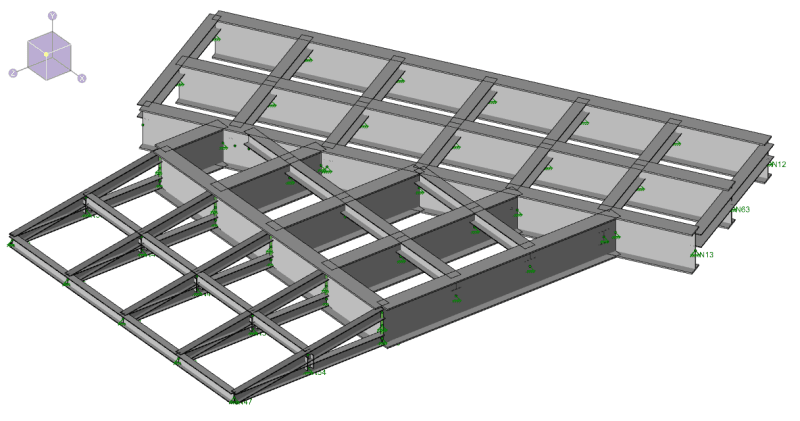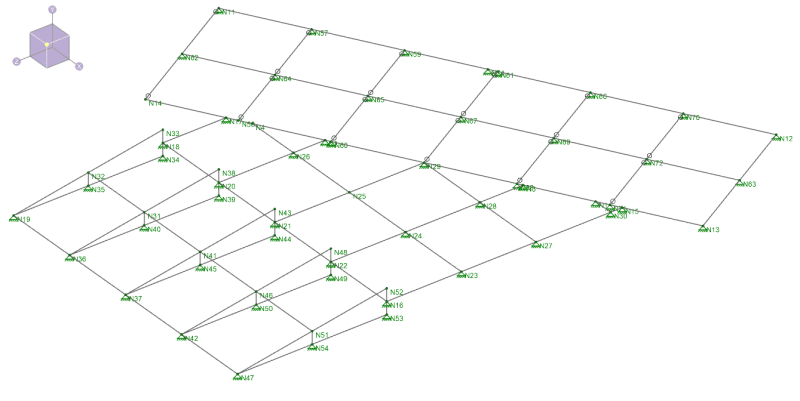Ndrds20
Structural
- Nov 6, 2020
- 4


Second question is about the spring constant. My ½ inch steel plate is seated directly above the roadway. The Geotech has decided that the modulus of subgrade location there is 100 pci. I need to input the spring constant in my software as a k/in. To convert from pci to k/in is just to multiply by the area of the “support”. I saw a calculation done here for a soil that had a modulus of subgrade reaction of 75 pci. The area of the “support” was taken as 1 SF. Thus, 75 pci * 1 SF * 144 Sq In/1 SF result is 10800 lb per inch, or 10.8 k/in. However, what area of support do I use? How often do I space my spring constants? I guess, the area of support would be dependent on how often I space the springs.
Third question. Same situation as the second question, but now, I have a beam seated directly on the ground. Same subgrade modulus as before, say 100 pci. What area of support do I use? Would this be dependent on how far I space my springs?
Sorry if I am not very clear in the description of my conditions. If you have any questions, please ask. Thanks in advance.
